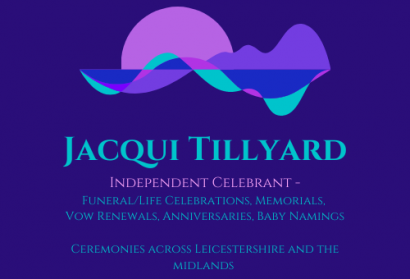Handfasting Wedding Ceremony Leicestershire
What is Handfasting?

Handfasting is an ancient Celtic marriage ritual and it involves tying a piece of material (can be tartan, cord or ribbon if you prefer) around your joined hands, as a symbolic way of representing your union as a married couple. It’s where the expression ‘tying the knot’ came from!
You can choose to have your handfasting ties draped across your hand or they can be tied in a form of knot. The know becomes your keepsake symbol of your vows to one another.
History of Hand Fasting
The exact origins of the handfasting ceremony are mostly lost to time. We can be certain that the ancient British custom has been around for many thousands of years. History shows that early handfasting ceremonies and weddings coincided with types of pagan worship. In particular these ceremonies tool place amongst Celts that migrated to Britain for Europe around 7000 B.C. They often revolved around the worship of a matriarchic goddess figure.
The 1995 film, ‘Braveheart‘ shows William Wallace (Mel Gibson of course) and the love of his life, Murron, having a hand fasting ceremony. The original idea of hand fasting was a kind of engagement. It showed that the couple were betrothed for a year and a day before they then married.
The 1995 film, ‘Braveheart‘ shows William Wallace (Mel Gibson of course) and the love of his life, Murron, having a hand fasting ceremony. The original idea of hand fasting was a kind of engagement. It showed that the couple were betrothed for a year and a day before they then married.
Handfastings that took place alongside a Druid ceremony were important in Celtic Britain. These grand ceremonies were often reserved for the richer elite members of societies. Most people opted to express their love with a smaller handfasting celebration that they could afford. May Day and Beltane are still important days in Pagan and Celtic traditions. These days were often seen as a traditional day to get engaged. Scottish and Irish viewpoints also indicate that a handfasting signified betrothal between a couple rather than marriage itself. Back in history a wedding ceremony that took place in front of witnesses – often friends and family – was not required for a couple to claim they were married. Holding a more public handfasting in front of the local community ensured their status as a couple was recognised. Unlike a modern marriage, which is designed to last forever, a handfasting was often only valid for a year and a day.
A New Modern Tradition
In recent years there has been an increase in demand for couples to have a hand fasting ceremony at their marriage, even Prince William and Kate Middleton had one at their wedding in 2011.
If you decide to have a hand fasting, I always make a point of saying that although that was the tradition, your hand fast will be for life! There are a few different ways for a hand fasting to be done and your Celebrant will be able to give you ideas.
Handfasting has changed since its original inception, however you can still use some traditional parts of the practice in your ceremony. For example, renewing vows several times without a permanent marriage. Accepting that a bond will only last as long as love does. The specific method of tying the ribbon or cord during the handfasting, right to right hand and left to left. You can incorporate a legal practice in the handfasting, where you can also exchange rings during your ceremony.
Hand fasting is a lovely gesture and one that seems to be becoming more popular. The tied knot is a nice keepsake of your big day. Your knot becomes a symbol of your promise to be bound to one another, in love.
